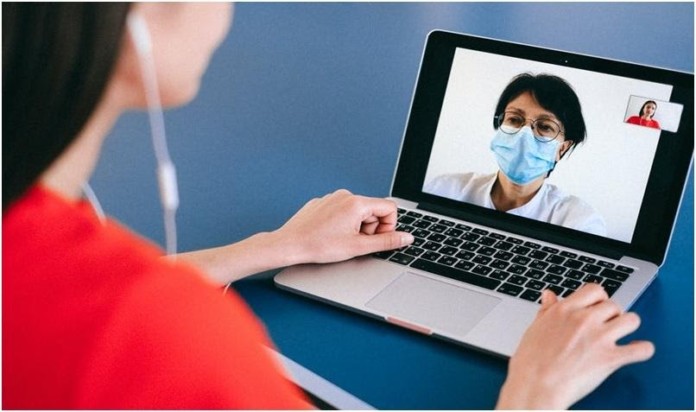Do you need to see a doctor? Maybe you need to get a prescription refilled or you’re having a minor medical complaint. With telemedicine, you could talk to a doctor about your problem and get treatment without leaving home.
Perhaps in large part thanks to the COVID-19 pandemic, telehealth services have become more popular recently. You can use your laptop, phone, or tablet to video conference with a doctor or therapist, discuss your symptoms, and get medication and referrals. But what can you expect from your first telemedicine appointment, and how should you be prepared? Read on to find out.
Make Sure You’re Covered
Before you schedule a telemedicine appointment, make sure it’s covered by your insurance. Since the outbreak of the pandemic, some states have passed laws requiring insurers to cover telehealth services. Many insurers will cover telemedicine because it is cheaper than meeting with a doctor in person, so make sure your provider has a copy of your insurance card. If you don’t have insurance, telemedicine can still be more affordable than in-person care.
Get Your Device Ready
Your doctor won’t just Facetime you — there are medical privacy laws to consider. Your doctor’s office will probably use a proprietary app or web service for telehealth video conferences. Make sure you have the app and login information you need to connect with your doctor on a video call. Test your camera and microphone to make sure they work. Remember to have your device fully charged in time for your appointment.
Prepare a Quiet, Private Spot
Having a telehealth appointment isn’t quite the same as seeing a doctor in person because you don’t have the privacy of an exam room to reveal your symptoms and concerns. That doesn’t mean you’re not entitled to privacy during your appointment, but it’s probably not a good idea to have it at Starbucks. Find a quiet place where you can complete your appointment uninterrupted. You’ll be able to focus better on what your doctor is saying and make better use of his or her time if you’re not distracted by a noisy environment or fending off the attentions of needy pets or children.
Make sure the space in which you plan to have your appointment is well lighted, so that your doctor can see you better, especially if you have something to show him or her, like a rash or an injury. Ideally, you’ll be able to set your device down in front of you so you can move around, again, especially if you have something to show the doctor.
Write Down Your Symptoms Beforehand
Before you attend your telehealth appointment, prepare as you would for any doctor’s appointment by writing down a list of your symptoms and concerns. Add to the list how long you’ve had each of your symptoms and how it’s changed in severity over time. Concrete details can be useful — for example, if you’ve had a fever, write down how high and low it’s been, and how long you’ve had it, as well as any medications you may have already taken to treat it. You can mention these symptoms to the doctor, and you may even be able to show him or her the list or send a picture of it.
Telemedicine can be useful for treating non-emergency conditions, like minor illnesses and injuries, but you can also use telehealth appointments for primary care, follow-up visits, second opinions, and ongoing care. For example, if you need to get a prescription refilled for a condition that you’re managing well, you can save yourself the hassle of an office visit and easily renew your prescription online. Plenty of people seek treatment for chronic conditions like diabetes, heart disease, and high blood pressure through telemedicine, especially since the pandemic. You can get birth control prescriptions renewed online, or even get psychotherapy and psychiatric care.
Just as you would in a brick-and-mortar doctor visit, you should be prepared to ask questions and take notes and your condition. That’s especially true if you’re being treated for chronic conditions that require medication management and regular check-ins, as well as for follow-up visits where you might have an opportunity to address any concerns you’ve had about your treatment or recovery. However, usually if you’re seeking treatment for something that requires note-taking, your doctor will want you to come in.
Telemedicine has given us the convenience of speaking with a doctor and receiving medical treatment without having to drive across town or risk exposure to sick people during a pandemic. Once you’ve tried it, you’ll never want to see a doctor in person again!




